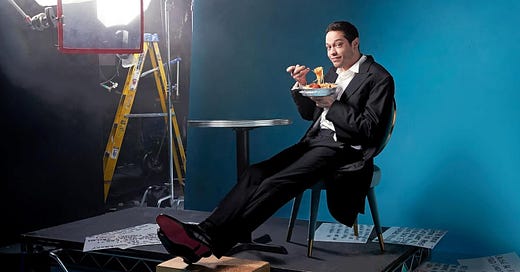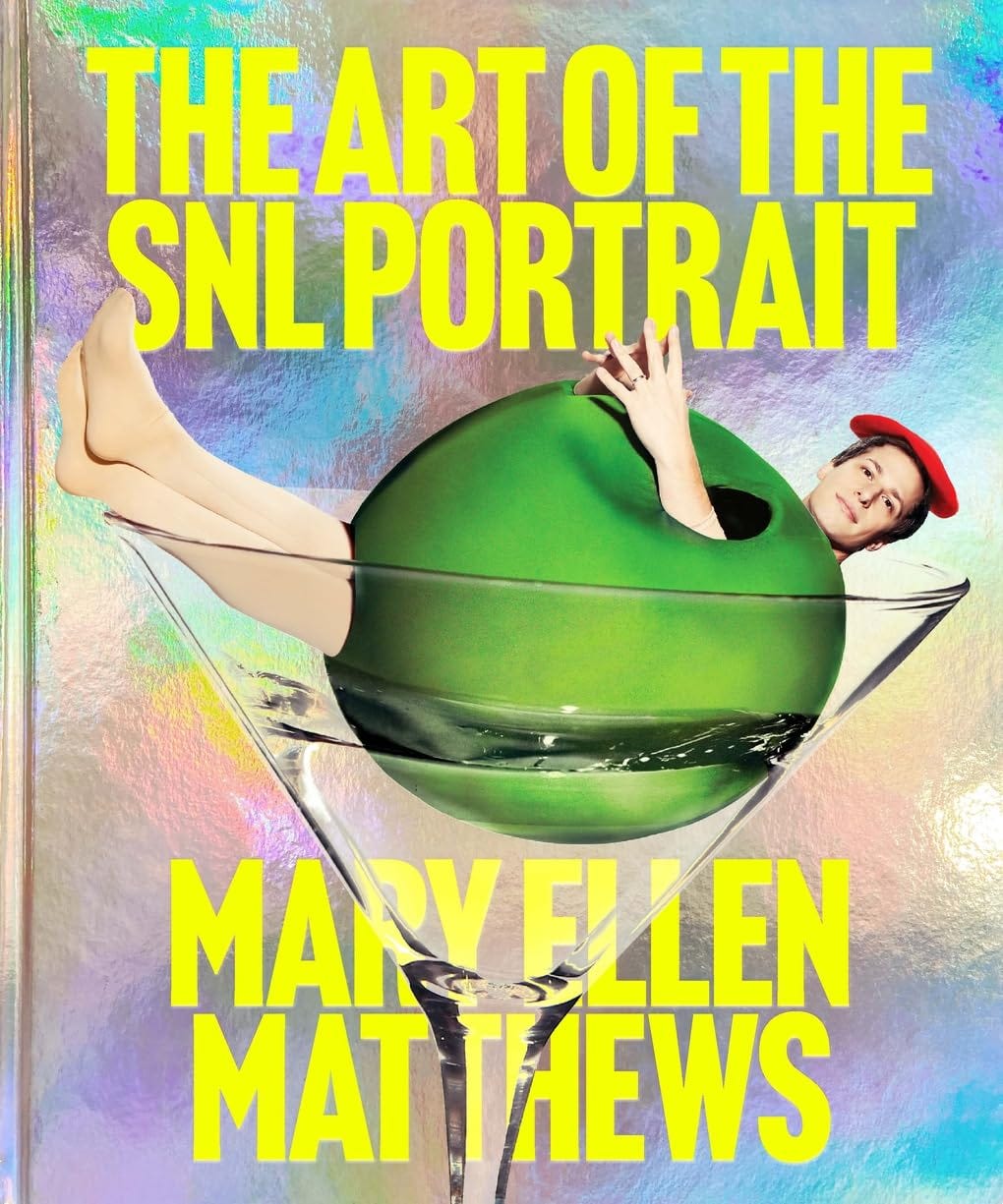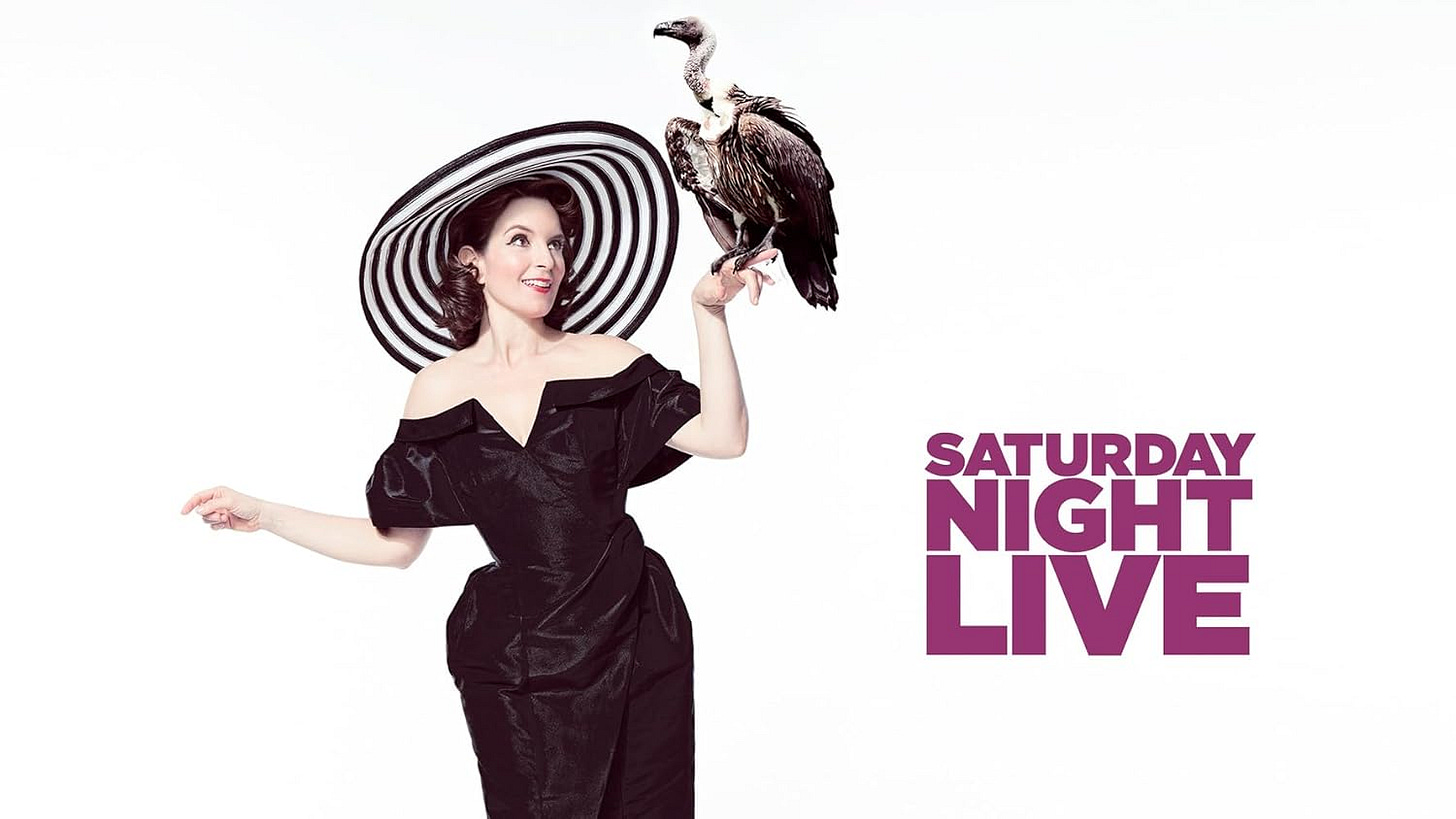In honor of Saturday Night Live’s 50th anniversary, I want to share with you this profile of photographer Mary Ellen Matthews I wrote for Digital Photo Pro magazine back in 2010. She is the artist responsible for the fantastic portraiture seen every week on the show, and she was a generous interview subject. I learned much from our conversation that I continue to put into practice today. And, thankfully, I’m no longer the only one celebrating her work. Her new book, The Art of the SNL Portrait, is out March 4th from Abrams Books.
Some gigs are truly one of a kind. Creating celebrity portraits for broadcast to 10-million viewers each week certainly qualifies. That’s the job Mary Ellen Matthews, official photographer for Saturday Night Live, has held since 1999.
“I’m so happy that someone paid attention to it for what it is,” she says, “a very unique job, a unique part of television. To have photography broadcast on a weekly basis, it’s amazing.”
For 24 weeks between September and May, Matthews creates portraits of the show’s celebrity hosts and musical guests. The broadcast goes live at 11pm Saturday night, and the week before is a whirlwind for the entire production — including the photographer.
“We try to photograph the host on Tuesday and then the band on Thursday,” Matthews says during a Thursday afternoon break, “but then this week and the past couple of weeks it’s all been Thursday. I just finished Dave Matthews Band and Joseph Gordon-Levitt and we have to go back and do one more outfit at 6pm while he finishes rehearsal. It moves pretty fast.”
Matthews works fast too, right from the NBC headquarters at 30 Rockefeller Center. But she doesn’t shoot in a photo studio. She creates a makeshift shooting space in Studio 8H, the famed location from which SNL has broadcast since 1975.
“Today there’s rehearsal down in the studio,” she explains. “The band comes in on Thursday so they’re rehearsing and blocking and we have a seamless set up to the side, and so when we’re shooting the host, the band’s having this live concert as we’re shooting. It creates this really amazing environment.”
That frenetic shooting space definitely contributes to the feel of Matthews’ portraits. Far from stagnant, her images are filled with a sense of urgency. It’s something she does deliberately, but it also comes naturally. Shooting adjacent to a concert certainly helps boost the energy, although it does have drawbacks.
“There’s a yes and no to that,” Matthews says, “because sometimes we can’t talk, it’s so loud. That gets difficult. But it’s a great environment and what that brings to the shoot, there is an amount of excitement there. I like to get people up to that place, that high energy, so it’s part of that as well. I have a lot of energy. My crew does. I just make that the vibe. Instead of bringing it up there, I start it there.”
Matthews is fortunate, she says, to work with generally willing subjects. Because they’ve agreed to be a part of SNL, they tend to be open to the process of the shoot and somewhat less likely to reject the photographer’s concepts out of hand.
“Nothing’s ever really out of bounds, ever,” she explains. “There’s a looseness to it. ‘Okay, let’s do it!’ kind of thing. I try to do research before the shoot and get some ideas and try to keep it new and fresh each week. I work with a stylist and I present some tearsheets or books and ideas and I’ll certainly work with the stylist to come up with where we’re going.”
That “just do it” attitude is also influenced by the production schedule, and subjects feel it too. There’s no time to waste when working in live TV, and the stills are no different.
“My goal is to make it as quick and as easy as possible,” she says. “They’re here to host a show. This isn’t why they’re here, so I try to make it ‘I’ll fly under the radar’ week. If it’s on Tuesday, we’ll have a couple of hours. Today was very quick, maybe 40 minutes with Joseph to do four or five different looks. I’ve got to say it’s the best training anyone could possibly have. I can make something happen so fast it will make your head spin.”
There’s a lot of pressure that accompanies shooting celebrity portraits with two-day deadlines week after week. But the pressure Matthews doesn’t feel, she says, is undue stress — from herself, her subjects or the show’s producers — to be something she’s not, or to create images she doesn’t want to.
“I don’t feel any pressure at all to be anything,” she says. “I feel comfortable in what I do for the show. The only pressure I feel is to keep it new. The challenge that I have is that because we’re in high definition the ratio is 16x9 and to put a vertical person in a horizontal space gets difficult. It gets a little frustrating. So trying to come up with different positionings and orientations and just looking at it differently if I can week by week. Just trying to keep it fresh.”
Matthews makes ‘keeping it fresh’ look effortless, but it’s something she works at. From week to week she maintains a continuity in lighting and post-production that gives each season a distinctive visual identity. Although it’s achieved in lighting as well as retouching, the lighting she says is more than likely going to remain essentially the same — flattering portrait light, with the classic Hollywood kick of hard light.
“I think it just helps the image pop off the screen,” she says. “If you use soft or flat lighting it becomes not as dimensional. The advantage I have is I have dimension to work with. It’s not just a billboard, it becomes something that has some depth to it. So it gives it a little more contrast, and if I use edge lights and then light the background, it goes farther and farther back. I try to achieve that as much as I can. I’m so used to seeing everything that way, if I see something like a softbox I’m just ugh. It always has to have this big pow to it. It’s really not rocket science. It works for what I do.”
“I want to determine a look and stick with it,” she continues, “but each person looks different and reacts to the treatment a little bit differently, so it’s kind of a balance of keeping it consistent yet making it look great and also making it artful. There’s definitely a lighting thing, a color palette that we’re working with and I’ve kind of used a solarized look this season. I think I carried a little bit over this season. It worked so great last year, I kind of just tweaked it a little bit. I didn’t quite throw it all away this year.”
This year has been busier than most for Matthews because in addition to her weekly portrait responsibilities (as well as all of her team’s other photographic responsibilities for the show, including documenting rehearsals, archive management, promotional photos, cast photos and more) this year she took on the added role of director — wielding a Canon EOS 5D Mark II with SNL producer and director Jim Signorelli to shoot video as well.
“I got very busy because I worked on the opening credits,” Matthews says, “the title sequence. We had the Canon guys come and they were with us the whole shoot and they had the 5D Mark II and the 7D and we just used those two cameras and it was amazing. The look is incredible. How it picks up ambient light is just amazing.”
She doesn’t claim any plans to abandon still photography in favor of directing, but it’s clear that Matthews is willing to embrace new technologies and special effects to help shape her vision and keep it fresh. Thankfully, the job of still photographer for Saturday Night Live doesn’t appear to be unnecessary any time soon. After all this time, the images have become an iconic part of the show — and they’re actually a product of the technical peculiarities of broadcast TV.
“Because of all the national affiliates,” she explains, “because it’s a live show, they all go to different commercials at different timing, and they have to come back to something still to start the show. So there is a real good reason for them.”
Saturday Night Live may keep Matthews busy, but it isn’t her only gig. After all, shooting just 24 weeks a year affords plenty of down time to do other work — often celebrity portraits for a variety of advertising and editorial clients. Not only is it creatively satisfying to do outside work, in the end it becomes beneficial for her role with the show.
“I try to do as much other work as possible,” she says. “It’s always good for all of us here to kind of stretch into something else and then bring it back to here. There’s so many amazing people who work here: all our set designers and costumers and hair and makeup people. We all do other things.”
Having those talented people on site affords Matthews enviable resources for sets and costuming. More often than not she works with a seamless background, but she does occasionally venture into bigger productions.
“I went through a thing last year,” she explains. “I went more conceptual and I was trying to come up with ideas. With Will Ferrell I did him with five dogs playing poker, which was hilarious. And it’s fun to think of all that stuff, but it’s expensive. But we’ll try to introduce that sort of thing every once in a while.”
That amount of creative freedom may feel out of reach to some commercial photographers. That it comes from such a high-profile client is especially surprising. Then again, Matthews is quick to point out that it’s all just a part of the fast-paced, exuberantly creative culture of the show.
“The way the show works,” she explains, “it all is under Lorne Michaels of course, but mostly we just kind of try to take care of everything on our own and just get it done. And so far so good. I haven’t had many problems with any of the pictures. If somebody does have an issue with it of course we’ll change it, but it really hasn’t happened too often. We just kind of get it done and get it up on the air and everyone’s been very pleased.”
In 2010 Mary Ellen Matthews was using a Canon EOS 5D Mark II and Dynalite strobes. All images © Mary Ellen Matthews from her new book, The Art of the SNL Portrait, out March 4th from Abrams Books. This piece was edited for clarity and length.










This is fascinating. I think I have "Mary Ellen Matthews" envy, and envy is rare for me. Thanks for sharing!
(Just getting to this and other things because I was in New Zealand for all of February)
I read Susan Morrison's Lorne Michaels biography this week, so this is timely. Thanks, Bill!